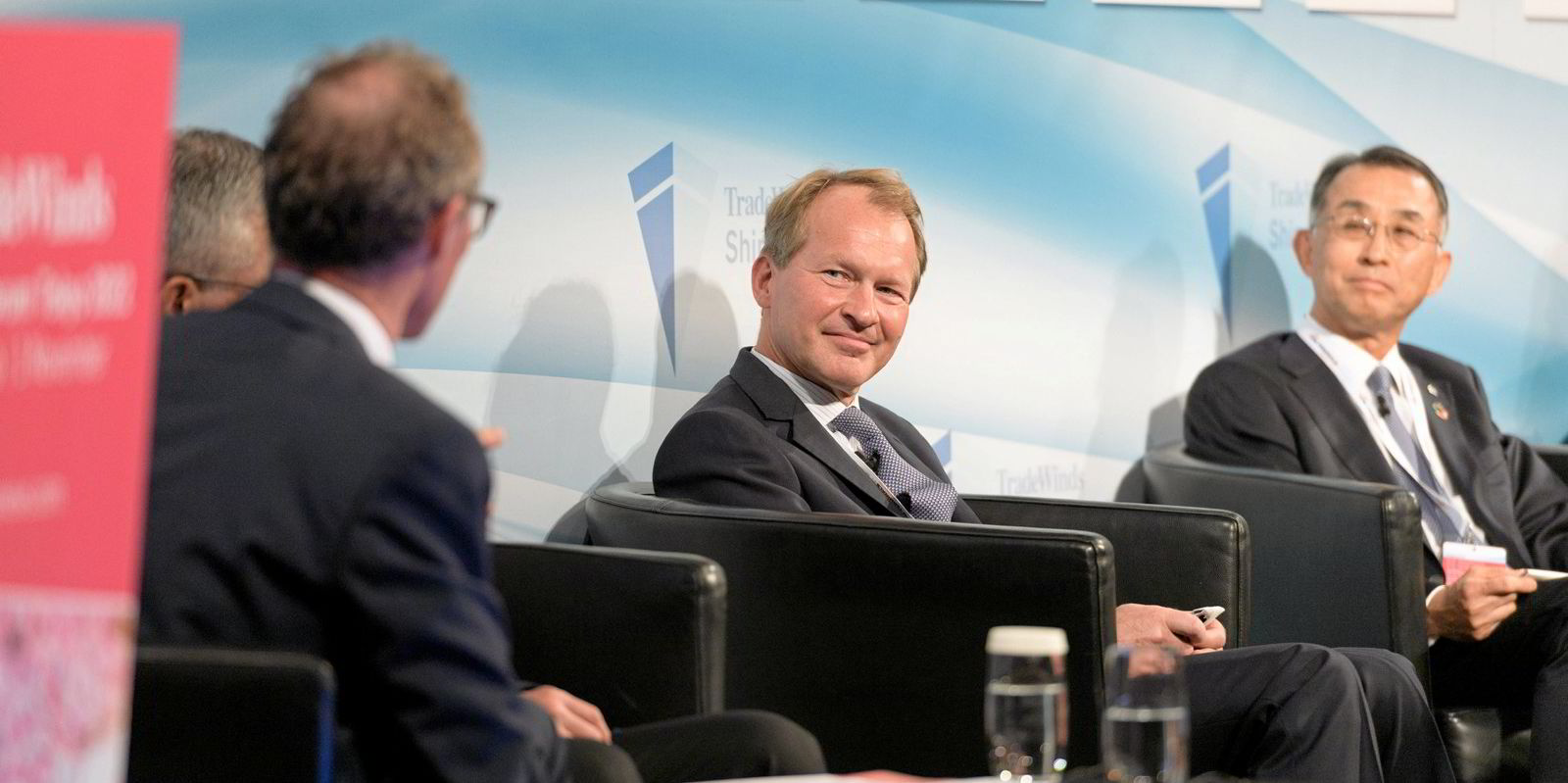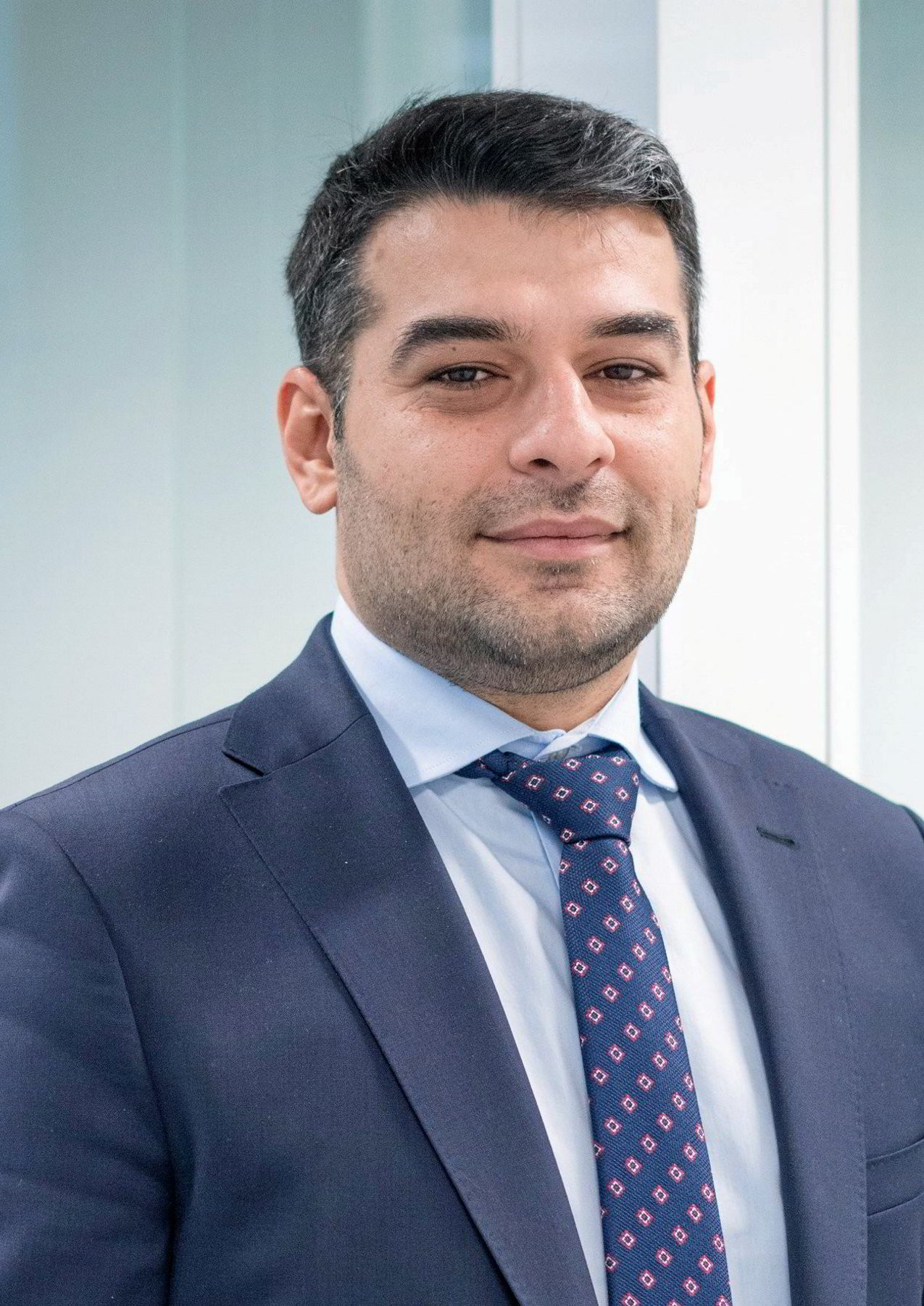Keeping costs low will be key for maritime companies aiming to win customers in the carbon capture and storage (CCS) market because it involves shipping a cargo that industries want to do away with, said executives for two players in the burgeoning sector.
That will put a premium on bringing scale to a market that is fast growing because of the imperative for industries to decarbonise, particularly in Europe, but that is still relatively new.
Anders Lepsoe, chief executive of Knutsen NYK Carbon Carriers (KNCC), said the CCS market is developing at a very rapid pace, starting from zero just a few years ago. His company is aiming to get in on the action of carbon transport through the liquefied CO2 carriers it is planning to build.
“I think the most important factor for KNCC in this setting is to actually make everybody understand that this is waste management,” he said in a live stream of TradeWinds’ Green Seas podcast at Nor-Shipping 2023 near Oslo. “It has to become cheap.”
Lepsoe, whose company is a joint venture of Japan’s NYK Line and Norway’s Knutsen Group, said the freight cost for handling a tonne of CO2 has to be as low as possible, which could be a challenge for companies in the oil and gas sector that have become accustomed to big spending.
Altera Infrastructure government relations advisor Anders Melhus said the CCS market is at a key inflection point, and his company sees an opportunity to get involved in more than just the transportation of carbon.
The UK-headquartered outfit, formerly known as Teekay Offshore, is an owner of shuttle tankers, offshore vessels and floating production tonnage that are in the business of taking hydrocarbons from below the sea.
Altera subsidiary Stella Maris is aiming to do the reverse, by providing full maritime logistics, shipping CO2 to an offshore injection unit and then storing it below the ocean. UK company and partner Wintershall Dea won a licence from Norway in March to develop a storage project of seven million tonnes per annum in the North Sea.
Below carbon allowance cost
Melhus, who describes CO2 as a resource that has a negative value, said the key is maritime infrastructure that is scaleable and flexible.
In Europe, it means providing a service to industries that are covered under the European Union Emissions Trading System, meaning CCS will be an alternative to buying carbon allowances.

“So if we want to provide a sustainable option to grow this industry, it needs to come below the cost of emitting essentially, as that would be the opportunity cost,” he said.
Panos Koutsourakis, vice president of global sustainability at American Bureau of Shipping, said the classification society sees growth ahead as industries face the mounting costs of decarbonisation regulations.
Designs abound
A variety of shipping solutions have been proposed, with the vessels ranging by size and the pressure at which they keep the cargo.
But he said whether that carbon is sequestered in offshore storage projects or reutilised in other industries will be determined on a case-by-case basis.

“The most efficient way that we see that is to utilise the captured carbon from other industries, developing this circular economy,” he said.
For Lepsoe, the key thing for keeping down the cost of CO2 transportation is economies of scale, and he said Europe’s tendency towards CCS projects of 1 mtpa to 2 mtpa may be too small to achieve that.
In Asia, where projects do not enjoy such levels of government support, projects tend to be bigger.
“That is the way this has to be done — large scale … to get the unit rate cost down as much as possible,” he said.
He said the experience of shuttle tanker companies like his and Altera shows that discharging carbon offshore saves a lot of capital expenditure, and KNCC’s vessels keep the CO2 at the same pressure and temperature throughout the value chain.
Melhus added that the European Commission has identified climate technology as a key pillar of its strategy to cut greenhouse gas emissions by 55% in 2030, relative to 1990 levels.
“If we are going to meet these targets, we need to start scaling up CCS activities really, really fast,” he said.

Read more
- Podcast: Who’s going to foot the bill to decarbonise shipping?
- Going long: Alternative fuels for shipping will require a sea change in the bunker-buying mindset
- Green Seas: Can the geopolitical divide be overcome to bring a global carbon levy for shipping?
- Ammonia could be ‘dominant’ fuel for liner sector, Lloyd’s Register CEO says
- Podcast: Container shipping follows the leaders on a variety of alternative fuel pathways


